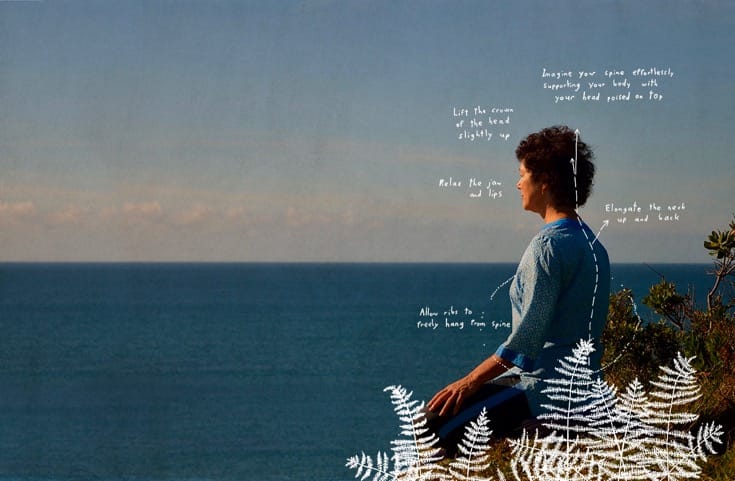Two things often go wrong once someone has received meditation instruction telling them how to hold their bodies and breathe. The first is that they receive the instruction in a rigid way and take up a posture that is a narrow imitation of the one they imagine being described. The second is that whatever rigid approach they take up in the beginning then becomes a tightly held habit, one that can take a lifetime to break. This can limit one’s practice and also lead to physical pain and even injury.
One way to work with these problems, which is finding traction among meditators, is the Alexander Technique. Developed in the late 1800s by Frederick Matthias Alexander, it helps bring awareness to the body’s posture and movement, focusing on the relationship between the head, neck, and spine to the rest of the body. Alexander, a Shakespearean actor, discovered that the habitual way he retracted his head into his neck and spine was causing him to lose his voice by the end of a performance. By freeing himself from this fundamental pattern of tension, he was able to overcome his vocal troubles. From this, he developed a program to help people undo their body’s harmful habits, which he went on to teach for more than fifty years.
The deeper goal is to free ourselves from habitual reactions to the moment-to-moment challenges of our daily lives, whether we are sitting still in meditation or running a marathon.
The Alexander Technique is well known for helping people improve their posture and their fluidity and coordination in movement. But according to Michael Ostrow, a longtime teacher at the New York Center for the Alexander Technique and a former Zen practitioner, although these are important benefits, the deeper goal is to free ourselves from habitual reactions to the moment-to-moment challenges of our daily lives, whether we are sitting still in meditation or running a marathon.
Training in the Alexander Technique is usually taught one on one and uses hands-on guidance to help convey new experiences of how to use the body. But to get a taste, we asked Ostrow to share some introductory guidelines for meditators.
Step 1: Become aware of the contact of your sit bones with whatever surface they are touching. Notice whether your pelvis is easily upright, or rolled under, or arched with the top tipped forward. Allow any tension around the sit bones to diminish. Let go of any tension holding the legs and pelvis together, particularly around the inner thighs and the tops of the thighs. Try gently rocking slightly backward and forward on your sit bones, with your pelvis and spine as a single unit. Even when sitting still, imagine that there is enough freedom between legs and pelvis that you could rock forward and back.
Step 2: Next, imagine water flowing up the spine from the firm foundation of the pelvis. Let the water support the skull as if it is unfixed from the top of the spine. Let the crown of the head be gently raised up by the stream of water so the head tilts slightly forward and the back of the neck lengthens slightly back and up.
Step 3: As you sense the support from your spine, let your awareness fill the whole three-dimensional volume of your body, then let it expand further so you have a sense of the space around you. Let go of the content of your thoughts and allow yourself to feel your thoughts in your body, so that you experience them as ripples within the energy field of your body rather than as noises in your head. In this way, you can begin to let go of the habitual feeling of your body as a kind of dense, isolated physical object with thoughts going on in a separate mind and tune in to the experience of your body as a living, breathing, open energy field, always relating to the environment around it. This is a part of awakening to your true self: whole, open, and alive.
You can learn more about the Alexander Technique and find local teachers by visiting alexandertechnique.com.

